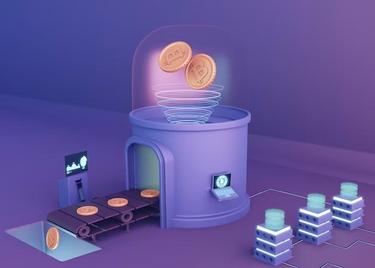Virtual asset
A virtual asset refers to a digital representation[1] of value that can be digitally traded, transferred, or used for payment or investment purposes. Virtual assets[2] include digital currencies[3], tokens, and other types of digital assets that can represent rights to real-world objects or services. They leverage blockchain[4] and other digital technology to secure and authenticate ownership and transactions.
- Characteristics of Virtual Assets
- Types of Virtual Assets
- Regulation and Legal Framework
- Impact on Traditional Markets
- Defining Virtual Assets
- Cryptocurrencies: The Foundation of Virtual Assets
- Non-Fungible Tokens (NFTs): Revolutionizing Digital Ownership
- In-Game Items and Virtual Economies
- Digital Art and Virtual Real Estate
- Regulation and Security of Virtual Assets
- The Future of Virtual Assets
Characteristics of Virtual Assets
Virtual assets exhibit several key characteristics that distinguish them from traditional assets:
- Digitization: Virtual assets exist solely in digital form and are accessed through digital platforms and devices.
- Decentralization[5]: Many virtual assets operate on decentralized networks, such as blockchain, enhancing security and transparency[6].
- Transferability: Virtual assets can be easily transferred between parties over the internet, often without intermediaries.
- Interoperability: Some virtual assets can interact across different platforms and ecosystems, enabled by standard protocols.
Types of Virtual Assets
Virtual assets encompass a broad range of digital assets, including:
- Cryptocurrencies[7]: Digital currencies like Bitcoin[8] and Ethereum[9] that use cryptography[10] for security.
- Utility Tokens: Tokens that provide access to a specific product or service facilitated by a platform.
- Security Tokens[11]: Tokens that represent an investment in real-world assets, subject to regulatory oversight[12].
- Non-Fungible Tokens (NFTs): Unique digital tokens representing ownership of specific items or content.
Regulation and Legal Framework
The regulatory landscape[13] for virtual assets is evolving, with governments and international bodies developing frameworks to ensure consumer protection[14], prevent money laundering[15], and support innovation. Regulations vary by jurisdiction and asset type, influencing how virtual assets are issued, traded, and held.
Impact on Traditional Markets
Virtual assets are reshaping traditional financial and investment markets, offering new mechanisms for fundraising, investment, and asset management. They challenge conventional business models by providing alternatives that are faster, more secure, and potentially more inclusive.
Virtual assets represent a rapidly evolving sector within the digital economy, offering new opportunities for investment, ownership, and exchange[16] in virtual environments. These assets encompass a wide range of digital items, including cryptocurrencies, non-fungible tokens (NFTs), in-game items, digital art, and virtual real estate. As the digital and physical worlds continue to merge, understanding virtual assets becomes increasingly important for individuals and organizations looking to navigate this new frontier.
Defining Virtual Assets
Virtual assets are digital representations of value that can be traded, used for investment, or purchased as a part of online communities and platforms. Unlike traditional physical assets, virtual assets exist entirely in digital form, relying on blockchain technology and other digital ledgers for their security, provenance, and ownership transfer.
Cryptocurrencies: The Foundation of Virtual Assets
Cryptocurrencies, such as Bitcoin and Ethereum, are often considered the cornerstone of virtual assets. They not only function as digital currencies but also provide the underlying technology for many other types of virtual assets. These decentralized digital currencies enable secure, peer-to-peer transactions without the need for traditional financial intermediaries.
Non-Fungible Tokens (NFTs): Revolutionizing Digital Ownership
NFTs have introduced a new paradigm for owning digital assets, allowing for the unique identification and ownership of digital items. From digital art and music to virtual real estate and beyond, NFTs have expanded the scope of what can be bought, sold, and collected in the virtual world.
In-Game Items and Virtual Economies
Virtual assets have also transformed online gaming, where in-game items such as skins, weapons, and virtual currencies can have real-world value. These assets are integral to virtual economies, creating opportunities for players to trade, sell, or invest within the game environment.
Digital Art and Virtual Real Estate
The rise of digital art and virtual real estate markets highlights the growing acceptance and value of virtual assets. Artists and creators can monetize their digital creations, while investors and collectors can own virtual land in expanding online worlds, contributing to the digital asset economy.
Regulation and Security of Virtual Assets
As the virtual asset market grows, so do concerns about regulation and security. Ensuring the safe exchange and ownership of digital assets is paramount, with governments and regulatory bodies beginning to develop frameworks to protect participants in the virtual asset ecosystem.
The Future of Virtual Assets
The future of virtual assets is closely tied to the development of the digital economy, with ongoing innovations in blockchain technology, virtual reality, and online platforms. As these assets become more integrated into everyday life, understanding their potential and challenges will be crucial for anyone looking to engage with the digital world.
Virtual assets are more than just a technological novelty; they are reshaping how we think about ownership, value, and community in the digital age. As this sector continues to evolve, it will undoubtedly present new opportunities and challenges for individuals, businesses, and societies worldwide.
- Digital Representation — A digital version of a physical or non-physical asset, recorded on a blockchain, that represents ownership or rights.
- Virtual Assets — Digital resources that have value in their use or as an investment, including cryptocurrencies and NFTs.
- Digital currencies — Digital forms of money that exist only in electronic form, not in physical form like coins or notes.
- Blockchain — A decentralized digital ledger recording cryptocurrency transactions across multiple computers.
- Decentralization — Distribution of power away from a central authority in the management of cryptocurrencies.
- Transparency — The characteristic of blockchain technology that allows all transactions to be visible and verifiable by all network participants.
- Cryptocurrencies — Digital or virtual currencies that use cryptography for security and operate on a decentralized system, unlike traditional currencies.
- Bitcoin — The first and most well-known cryptocurrency, was introduced in 2009 by Satoshi Nakamoto, who developed Bitcoin.
- Ethereum — A blockchain platform with its own cryptocurrency, Ether, is known for smart contract functionality.
- Cryptography — The practice of securing communications to prevent third parties from reading them, used in digital currencies for securing transactions.
- Security Tokens — Digital tokens that represent ownership or an interest in real-world assets, subject to regulatory compliance.
- Regulatory Oversight — The supervision by authorities to ensure that market participants comply with legal and ethical standards.
- Regulatory Landscape — The set of laws, guidelines, and policies that govern the use of virtual assets across different regions.
- Consumer Protection — Legal measures and regulations aimed at safeguarding the rights and interests of consumers within the cryptocurrency market, including protection against fraud, misinformation, and market manipulation.
- Money Laundering — The process of making large amounts of money generated by a criminal activity appear to be legally obtained.
- Exchange — A platform where individuals can buy, sell, or trade cryptocurrencies for other digital currency or traditional currency.
- Financial Action Task Force (FATF). 'Guidance for a Risk-Based Approach to Virtual Assets and Virtual Asset Service Providers'
- The World Bank. 'The World Bank Group's Response to the Development Challenges of Virtual Assets'



